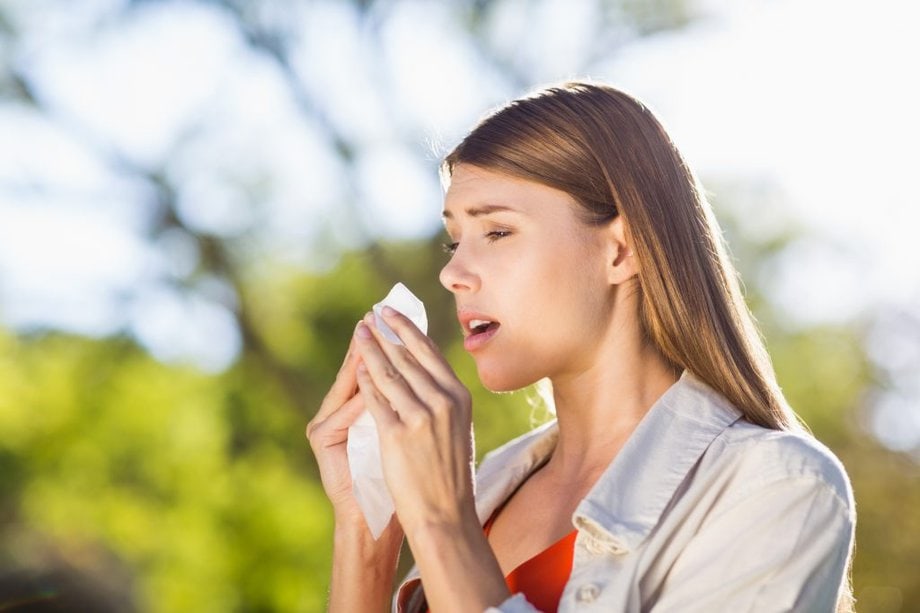What Is The Importance Of Antihistamines In Allergy Relief?

Antihistamines play a crucial role in providing relief from allergies by inhibiting the effects of histamine, a chemical released by the body in response to an allergen. Allergies are immune system responses to harmless substances, such as pollen or pet dander, leading to various symptoms like sneezing, itching, and nasal congestion.
Histamine is a key mediator of allergic reactions, causing inflammation and triggering the release of other chemicals that contribute to the manifestation of allergy symptoms. Antihistamines work by blocking the H1 histamine receptors, thereby preventing histamine from binding and exerting its effects.
This article aims to explore the importance of antihistamines in allergy relief, discussing their mechanism of action, different types available, and common allergy symptoms that can be alleviated with their use. Additionally, guidelines for selecting the most suitable antihistamine and potential side effects will be addressed, along with suggestions for optimizing their effectiveness.
Finally, alternative allergy relief options will be briefly discussed.
Key Takeaways
- Antihistamines provide effective relief from allergies.
- Adjusting the dosage or timing of antihistamines can help manage side effects.
- Switching to antihistamines with fewer anticholinergic effects can reduce side effects.
- Consult with healthcare professionals for guidance on managing antihistamine side effects.
Understanding Allergies and Histamine
Understanding the role of histamine in allergies is crucial in comprehending the significance of antihistamines for alleviating allergic symptoms. Allergies are a result of the immune system’s exaggerated response to harmless substances, known as allergens. When these allergens enter the body, they trigger an immune response, causing the release of various chemicals, including histamine.
Histamine is responsible for the classic symptoms of allergies, such as itching, sneezing, and watery eyes. Antihistamines work by blocking the histamine receptors, thus reducing the allergic response. By preventing histamine from binding to its receptors, antihistamines alleviate the uncomfortable symptoms associated with allergies.
Furthermore, antihistamines can also be used as a preventive measure to reduce the severity of allergic reactions when exposed to known triggers. Understanding the role of histamine in allergies and the importance of antihistamines provides valuable insight into effective allergy relief strategies.
How Antihistamines Work
To comprehend the mechanism of action of antihistamines, it is crucial to delve into their mode of operation.
Antihistamines are medications that work by blocking the effects of histamine, a chemical released by the body during an allergic reaction. Histamine is responsible for triggering the symptoms of allergies, such as itching, sneezing, and runny nose.
By blocking histamine receptors, antihistamines can effectively reduce or alleviate these symptoms. The effectiveness of antihistamines in providing allergy relief has been well-established through scientific research and clinical trials.
However, it is important to note that antihistamines may have side effects, such as drowsiness, dry mouth, and dizziness. These side effects vary depending on the specific antihistamine used and the individual’s response to the medication.
Therefore, it is advisable to consult a healthcare professional before using antihistamines to ensure their appropriate use and minimize potential side effects.
Types of Antihistamines
There are several different categories of antihistamines that are commonly used for the treatment of allergic reactions. Each category contains antihistamines with distinct characteristics and mechanisms of action.
The first category is known as first-generation antihistamines, which include medications such as diphenhydramine and chlorpheniramine. These antihistamines are effective in relieving allergy symptoms but are often associated with sedation and drowsiness.
Second-generation antihistamines, on the other hand, have a lower likelihood of causing sedation and include medications such as loratadine and cetirizine. These antihistamines have a longer duration of action and are generally preferred for long-term use.
Additionally, there are also topical antihistamines available in the form of nasal sprays and eye drops, which provide targeted relief for allergy symptoms in the nasal passages and eyes.
Overall, the different formulations of antihistamines offer a range of options for individuals seeking allergy relief, with varying durations and side effect profiles.
Common Allergy Symptoms Relieved by Antihistamines
Common allergy symptoms such as sneezing, itching, and watery eyes can be effectively alleviated by the use of antihistamines. Antihistamines work by blocking the effects of histamine, a chemical released by the body during an allergic reaction. This helps in relieving itchiness and reducing sneezing, which are common symptoms experienced by individuals with allergies.
Antihistamines are known to provide relief for a wide range of allergy symptoms, including:
- Sneezing: Antihistamines can help reduce the frequency and severity of sneezing caused by allergens such as pollen, dust mites, or pet dander.
- Itching: Antihistamines can effectively alleviate itching caused by allergic reactions to substances like insect bites, certain foods, or medications.
- Watery eyes: Antihistamines can help reduce tearing and redness in the eyes, providing relief from the discomfort associated with allergic conjunctivitis.
By targeting these specific symptoms, antihistamines play a crucial role in providing relief to individuals suffering from allergies.
Choosing the Right Antihistamine for Your Allergies
When selecting an appropriate antihistamine for managing allergies, it is essential to consider factors such as the specific symptoms experienced and any potential side effects.
There are several antihistamine brands available in the market, each with their own unique formulation and mode of action. Some common antihistamine brands include cetirizine, loratadine, and fexofenadine. These medications work by blocking the binding of histamine to its receptors, thereby reducing allergic symptoms such as itching, sneezing, and nasal congestion.
However, it is important to note that antihistamines may cause side effects such as drowsiness, dry mouth, and dizziness.
It is also worth considering natural remedies as an alternative to antihistamines. Natural remedies, such as saline nasal rinses and steam inhalation, can help alleviate allergy symptoms without the risk of side effects associated with medication.
Ultimately, the choice of antihistamine or natural remedy should be based on individual needs and preferences.
Potential Side Effects of Antihistamines
This discussion will focus on the potential side effects of antihistamines.
One common side effect is drowsiness and dizziness, which can impact daily activities and overall productivity.
Additionally, antihistamines may cause dry mouth and blurred vision, which can be uncomfortable and affect normal functioning.
Finally, it is important to consider the potential interactions antihistamines may have with other medications, as this can lead to adverse effects or reduced effectiveness of both drugs.
Drowsiness and dizziness
Drowsiness and dizziness are frequently reported side effects of antihistamines, which can pose challenges for individuals who require alertness during daily activities. Managing drowsiness becomes crucial for those who rely on antihistamines for allergy relief.
To mitigate these side effects, individuals can adopt various strategies, such as adjusting the dosage or timing of the medication. Additionally, alternative allergy treatments that do not cause drowsiness can be explored. These may include nasal corticosteroids, which reduce inflammation in the nose, or immunotherapy, a long-term solution that desensitizes the body to allergens.
It is important to consult with a healthcare professional to determine the most suitable option based on individual circumstances. By considering drowsiness management and exploring alternative treatments, individuals can effectively address the side effects associated with antihistamines while still managing their allergies.
Dry mouth and blurred vision
Dry mouth and blurred vision are commonly experienced side effects of antihistamines, which can present challenges for individuals seeking optimal symptom management.
Dry mouth, also known as xerostomia, occurs when the salivary glands do not produce enough saliva. This can lead to discomfort, difficulty swallowing, and an increased risk of dental issues such as tooth decay and oral infections. To alleviate dry mouth caused by antihistamines, individuals can try:
- Drinking water regularly
- Avoiding caffeine and alcohol
- Using saliva substitutes
- Practicing good oral hygiene.
Blurred vision, on the other hand, can occur due to the anticholinergic effects of antihistamines, which can interfere with the normal functioning of the eye. To manage blurred vision, individuals can try:
- Using lubricating eye drops
- Adjusting the dosage or timing of the antihistamine
- Switching to a different type of antihistamine that has fewer anticholinergic effects.
It is important for individuals experiencing these side effects to consult with a healthcare professional for proper guidance and advice on managing their symptoms effectively.
Interactions with other medications
Interactions between antihistamines and other medications should be carefully considered to ensure safe and effective treatment. Antihistamines can potentially interact with various medications, leading to adverse effects or reduced effectiveness. Concomitant use of certain drugs, such as sedatives, tranquilizers, or opioids, can increase the sedative effects of antihistamines, causing excessive drowsiness or impaired coordination. On the other hand, antihistamines may decrease the efficacy of medications used to treat high blood pressure, such as beta-blockers or diuretics. It is important to consult healthcare professionals to identify potential risks, contraindications, and precautions associated with combining antihistamines with other medications. Nevertheless, when used appropriately in combination therapy, antihistamines can provide effective relief for allergy symptoms while minimizing the risk of drug interactions.
| Drug Category | Examples |
|---|---|
| Sedatives | Diazepam, Zolpidem |
| Opioids | Codeine, Morphine |
| Beta-blockers | Propranolol, Atenolol |
| Diuretics | Hydrochlorothiazide, Furosemide |
Tips for Using Antihistamines Effectively
This section will discuss tips for using antihistamines effectively.
One tip is to follow dosage instructions carefully. Adhering to the recommended dosage instructions is crucial to ensure the safe and effective use of antihistamines.
Another tip is to time your medication properly. Timing your medication can enhance its efficacy in relieving allergy symptoms.
Remember to give each tip its own line, with a double new line after each complete concept.
Following dosage instructions
To ensure effective allergy relief, it is crucial to adhere to the recommended dosage instructions of antihistamines. Following dosage instructions is important for several reasons:
- Safety: Taking the right amount of antihistamines reduces the risk of experiencing adverse effects. Overdosing can lead to drowsiness, dizziness, and dry mouth, among other potential risks.
- Efficacy: Antihistamines work best when taken at the recommended dosage. Taking too little may not provide sufficient relief, while taking too much may not enhance the effectiveness but increase the likelihood of side effects.
- Consistency: Consistently following the dosage instructions helps maintain a steady level of antihistamines in the body, ensuring continuous relief from allergy symptoms.
- Avoiding drug interactions: Adhering to the recommended dosage reduces the risk of potential interactions with other medications. Some antihistamines may interact with certain drugs, such as sedatives or antidepressants, leading to unwanted effects.
Overall, following the dosage instructions of antihistamines is essential for both safety and efficacy in allergy relief.
Timing your medication for maximum effectiveness
Optimizing the timing of medication intake can significantly enhance the effectiveness of antihistamines in managing allergic symptoms.
Timing your medication appropriately can maximize the benefits of antihistamines by ensuring that the medication is at its peak effectiveness when allergens are present.
It is important to take antihistamines before exposure to allergens, as this allows the medication to work preemptively, blocking the histamine response before it occurs. This can help prevent the onset of symptoms such as itching, sneezing, and watery eyes.
However, it is crucial to follow the recommended dosage instructions and not exceed the recommended frequency or amount.
Taking antihistamines too frequently or in excessive amounts can lead to potential drawbacks, such as drowsiness and dry mouth.
Therefore, timing your medication intake appropriately, while adhering to the prescribed dosage, is crucial for maximizing the benefits and minimizing any potential drawbacks of antihistamines in allergy relief.
Other Allergy Relief Options
This section will discuss alternative options for allergy relief.
Nasal sprays and eye drops are commonly used to alleviate symptoms such as nasal congestion and itchy, watery eyes.
Allergy shots, also known as immunotherapy, can provide long-term relief by gradually desensitizing the immune system to specific allergens.
Additionally, making lifestyle changes to minimize exposure to allergens, such as keeping windows closed and using air purifiers, can also help in managing allergies.
Nasal sprays and eye drops
Nasal sprays and eye drops are effective tools in managing allergy symptoms. They provide targeted relief for symptoms such as nasal congestion and itchy eyes. Here are four reasons why they are important in the treatment of allergies:
- Localized Action: Nasal sprays deliver medication directly to the nasal passages, reducing swelling and congestion. This targeted approach provides fast and efficient relief.
- Allergy-Specific Formulations: Nasal sprays and eye drops are formulated to specifically target allergy symptoms. They contain antihistamines or corticosteroids that inhibit the release of histamines, reducing allergic reactions.
- Minimized Side Effects: Compared to oral medications, nasal sprays and eye drops have fewer systemic side effects. The medication is primarily absorbed locally, minimizing the risk of drowsiness or dizziness.
- Convenient and Easy to Use: Nasal sprays and eye drops are simple to administer and can be used as needed throughout the day. This makes them a convenient option for managing allergies on the go.
In summary, nasal sprays and eye drops play a vital role in allergy relief by providing localized relief for nasal congestion and itchy eyes. Their allergy-specific formulations, minimized side effects, and ease of use make them an important part of allergy management.
Allergy shots and immunotherapy
Allergy shots and immunotherapy are commonly used treatment options for managing allergies and have been shown to be effective in reducing symptoms.
Allergy shots, also known as allergen immunotherapy, work by gradually exposing the individual to small amounts of allergens, such as pollen or pet dander, to desensitize the immune system response. This process helps the immune system become less reactive to these allergens over time, resulting in a reduction in allergy symptoms.
Immunotherapy is typically recommended for individuals with severe or persistent allergies that are not well-controlled with other treatments. It can provide long-lasting relief and potentially reduce the need for medications.
However, it is important to note that allergy shots and immunotherapy are not suitable for everyone and should be administered under the guidance of a healthcare professional.
Lifestyle changes to minimize exposure to allergens
One effective strategy for managing allergens is to make lifestyle changes that minimize exposure to these triggers. Minimizing allergen exposure is crucial in alleviating allergy symptoms and preventing allergic reactions. Creating an allergy-free home environment is a key component of this strategy. To achieve this, individuals can take several steps.
First, it is important to keep windows and doors closed during high pollen seasons to prevent allergens from entering the house.
Regular cleaning, such as vacuuming and dusting, is also essential in removing allergens like dust mites and pet dander.
Using allergen-proof bedding and pillow covers can further minimize exposure.
Additionally, avoiding outdoor activities during peak pollen times and wearing a mask while doing yard work can help reduce allergen exposure.
Overall, these lifestyle changes play a significant role in providing relief from allergies by minimizing exposure to allergens.
Frequently Asked Questions
Can antihistamines completely cure allergies?
Antihistamines are effective in relieving allergy symptoms, but they do not completely cure allergies. They have limitations in providing long-term relief and may have potential side effects, which should be considered when using them.
Can antihistamines be used to treat non-allergic conditions?
Antihistamines have been found to be effective in treating various non-allergic conditions such as motion sickness, insomnia, and pruritus. However, their efficacy in these conditions may vary, and further research is needed to fully understand their role in non-allergic conditions.
Are there any natural alternatives to antihistamines for allergy relief?
Natural remedies and herbal remedies can provide an alternative to antihistamines for allergy relief. These remedies may include substances such as nettle leaf, butterbur, and quercetin, which have shown potential in reducing allergy symptoms in some studies.
Can antihistamines be used in children and infants?
Antihistamines can be used in children and infants for allergy relief. However, safety considerations should be taken into account, such as appropriate dosage, potential side effects, and consultation with a healthcare professional.
Are there any interactions between antihistamines and other medications?
Interactions between antihistamines and other medications can occur, potentially leading to adverse effects. It is important to consider the potential side effects of antihistamines when prescribing them alongside other medications.









